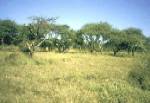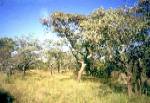
what's on | news | links | contact us | support Us | HOME | info | images
|
|
what's on | news | links | contact us | support Us | HOME | info | images |
| Birding at Nylsvley |
BIRDERS MAP BIRD CHECKLIST |
 Good Acacia Woodland (marked "A" on the map) can be found around the bridge hide (on both sides of the stream-bed - eastern side not accessible during high water) Species such as Crimson-breasted Shrike, Titbabbler and Waxbills can be located here. Walk along the vlei edge from the bridge hide parking area.
Good Acacia Woodland (marked "A" on the map) can be found around the bridge hide (on both sides of the stream-bed - eastern side not accessible during high water) Species such as Crimson-breasted Shrike, Titbabbler and Waxbills can be located here. Walk along the vlei edge from the bridge hide parking area.  occurs to the north-east of the campsite and around the picnic spot. The area around the Reserve offices is also usually worth a visit A good route is to go back towards the gate from the Campsite. Just before the big gate and office, turn right and follow the fence. Take the first available right turn and keep a watch for bird-parties.
occurs to the north-east of the campsite and around the picnic spot. The area around the Reserve offices is also usually worth a visit A good route is to go back towards the gate from the Campsite. Just before the big gate and office, turn right and follow the fence. Take the first available right turn and keep a watch for bird-parties. |
Web design: Indicator Projects |
|
visitors since 24 JULY '98